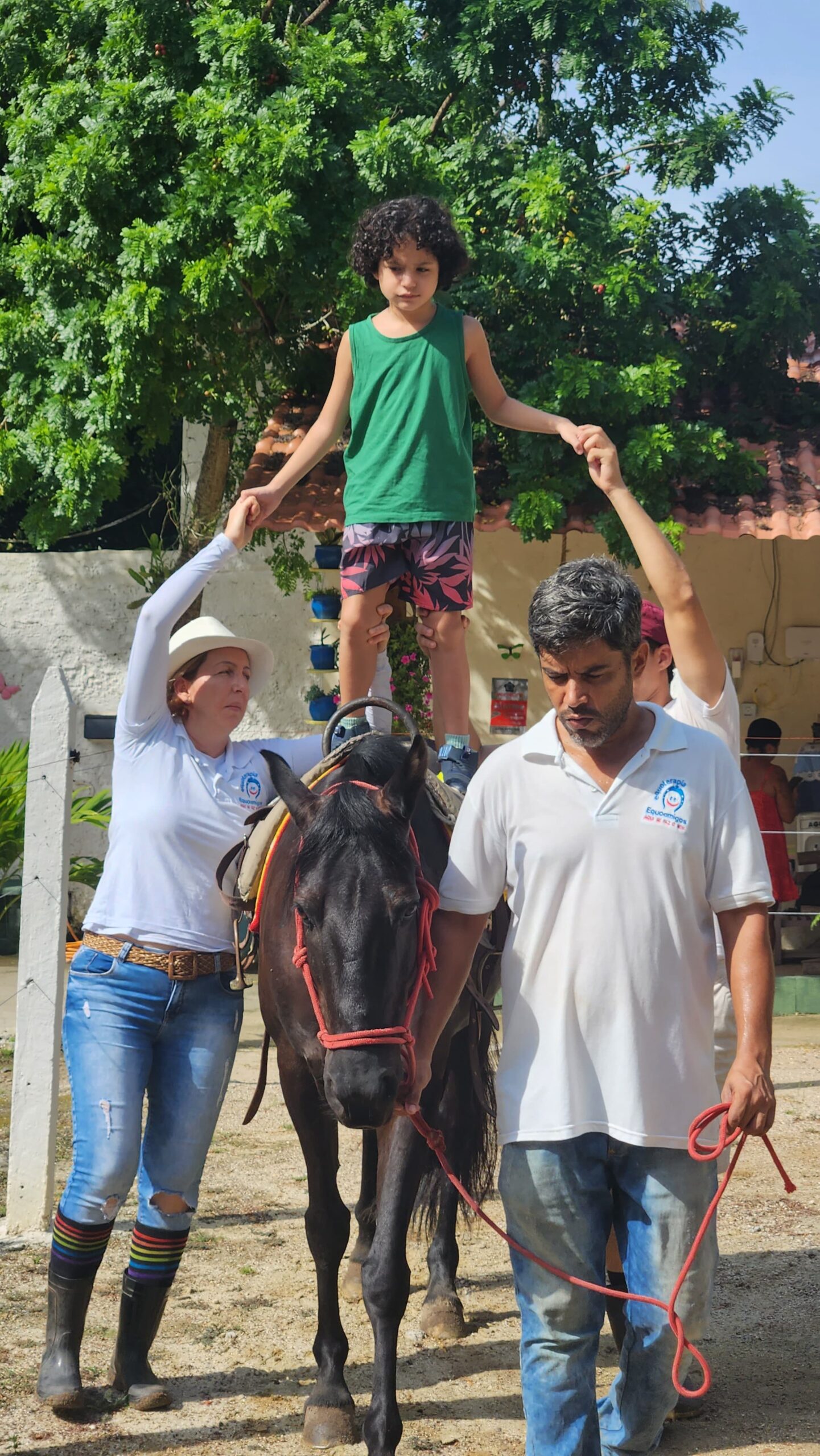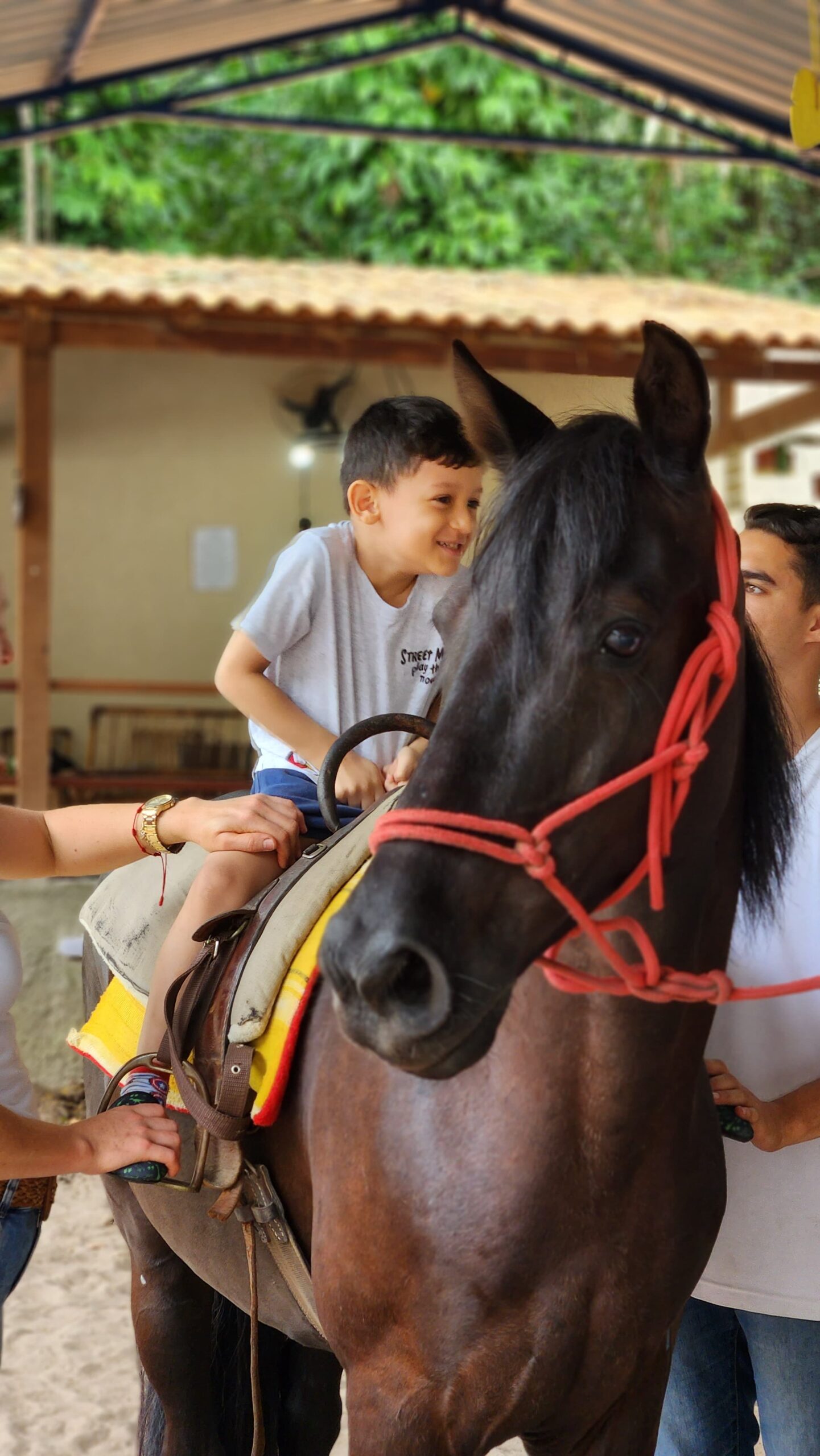Hippotherapy


The service provided to patients today
Currently, 280 to 300 appointments per month are provided to patients with Neuromotor and Neuropsychiatric disorders, with 50% of these appointments dedicated to underprivileged patients.
Benefits of the Program
Neuromotors
• Improve balance
• Improve biomechanical alignment
• Improve postural adjustments and control
• Improve coordination and better motor planning
• Improve body image perception
• Improve visual spatial perception
• Functionality
Psychological
• Increase alertness and attention levels
• Improve self-esteem
• Improve self-confidence
• Improve self-control
• Positively affects self-evaluation
• Personal interaction and socialization
• Improve general sense of well-being
Programs
Therapeutic Riding Programs consists on three phases, which are: Hippotherapy, Education and Retraining, and Equestrian Sports. The therapist assesses the treatment strategies and outcomes according to the patient’s response. The clinician then modifies the treatment strategies based on the patient’s level of success in meeting the system and motor goals and functional outcomes set for the single session. Within the clinical condition of each client, our aim is to explore their maximum potential.
HIPPOTHERAPY PROGRAM
It is recommended for clients who do not have autonomy, whether physical, psychological, emotional, to be alone on the horse, requiring the therapist to ride with them, until this client reaches all the required goals.
EDUCATION AND RETRAINING EQUESTRIAN PROGRAM
The client already has postural and /or psychological autonomy but is still not fit for the Equestrian program, which requires stand by assist until this patient reaches all the required goals.
EQUESRIAN PROGRAM
At this stage the client starts having independent control of the horse, being prepared for the inclusion in the equestrian activity, which will prepare them for sport.
Curiosities
What is the idea?
Horses have been used in health care since the beginning of the history of Medicine. Its origin dates from ancient Greece. Between 460 – 377 B.C., Hippocrates wrote a chapter on “Natural Exercise” and mentioned the benefits of riding. In 1569, Merkurialis from Italy wrote on “The Art of Gymnastics” mentioning horseback riding, and in 1780, in France, Tissot wrote in his book, “Medical and Surgical Gymnastics,” about motion of the horse as the most beneficial for gait. At the turn of this century, England recognized riding for the disabled as a beneficial form of therapy and offered riding therapy for wounded soldiers at the Oxford Hospital during WWI. By the 1950’s, British physiotherapists were exploring the possibilities of riding as therapy for all types of handicaps. When Liz Hartel from Denmark won the silver medal, in 1952, for Grand Pris Dressage at the Helsinki Olympic Games—despite her paralysis from polio—medical and equine professionals began to take notice and centers for therapeutic riding began forming in Europe. Today, Therapeutic Riding is practiced in most countries throughout the world. Disabled riders demonstrate their remarkable accomplishments in national and international sports riding competitions. Therapeutic Horseback Riding was recognized by the Federal Council of Medicine in Brazil on 09/04/1997 being taught as subject in physical therapy programs at Universities in Brazil.
Hippotherapy Fundamentals
Therapeutic Riding requires the involvement of the entire body of the patient, thus contributing to their overall development. The horseback rider receives continuous input by horse movements that are transmitted to the rider through the alignment of the gravitational centers (client and animal). When the gravity center from rider shifts during the horse riding, we notice movement in all three planes (flexion/extension in the sagital plane, lateral flexion in the frontal plane, and rotation in the transverse plane). The kinetic and dynamic action carried out by the horse stimulates the client’s automatic postural reactions where the sensory information has an important role in modifying motor responses. The approach works in the orientation and adaptation involving the central nervous system through feed-back and feed forward mechanism. Hippotherapy can be considered a set of educating and rehabilitative techniques that work to overcome sensory-motor, cognitive and behavioral issues.


